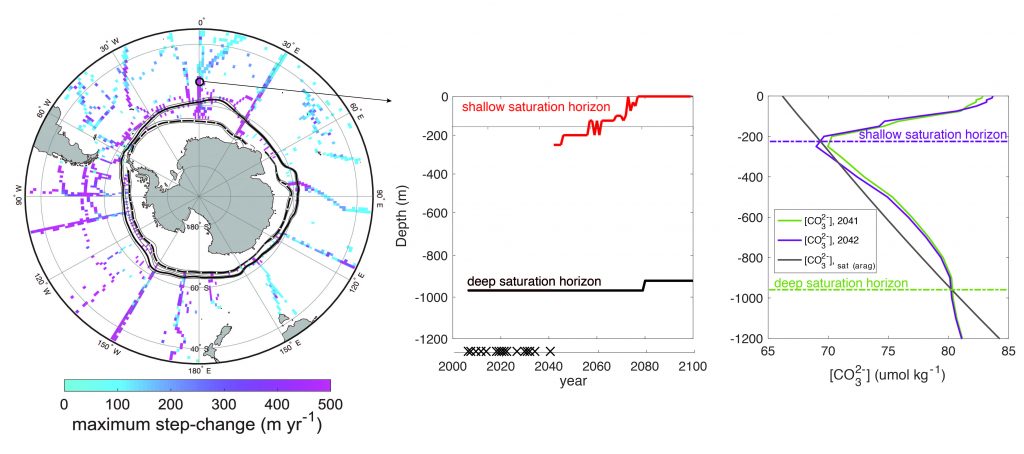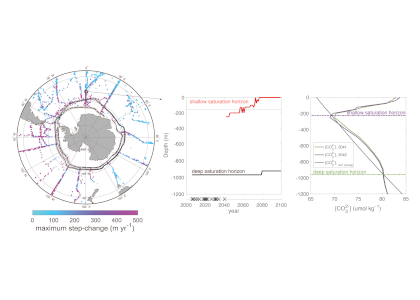Earth System Models (ESMs) project that by the end of this century, the aragonite saturation horizon (the boundary between shallower, saturated waters and deeper, undersaturated waters that are corrosive to aragonitic shells) will shoal all the way to the surface in the Southern Ocean, yet the temporal evolution of the horizon has not been studied in much detail. Rather than a gradual shoaling, a new shallow aragonite saturation horizon emerges suddenly across many locations in the Southern Ocean between now and the end of the century (Figure 1, left), as detailed in a new study published in Nature Climate Change.

Figure 1: Maximum step-change in the depth of the aragonite saturation horizon (left), timing of the step-change (center), and cause of the change (right). Xs on the time axis (center) indicate when the shallow horizon emerges in each ensemble member. (click image to enlarge)
The emergence of the shallow aragonite saturation horizon is apparent in each member of an ensemble of climate projections from an ESM, but the step change occurs during different years (Figure 1, center). The shoaling is driven by the gradual accumulation of anthropogenic CO2 in the Southern Ocean thermocline, where the carbonate ion concentration exhibits a local minimum and approaches undersaturation (Figure 1, right).
The abrupt shoaling of the Southern Ocean aragonite saturation horizon occurs under both business-as-usual and emission-stabilizing scenarios, indicating an inevitable and sudden decrease in the volume of suitable habitat for aragonitic organisms such as shelled pteropods, foraminifers, cold-water corals, sea urchins, molluscs, and coralline algae. Widespread reductions in these habitats may have far-reaching consequences for fisheries, economies, and livelihoods.
Authors:
Gabriela Negrete-García (Scripps Institution of Oceanography)
Nicole Lovenduski (University of Colorado Boulder)
See also OCB2019 plenary session: Carbon cycle feedbacks from the seafloor (Wednesday, June 26, 2019)




